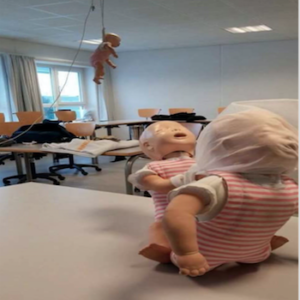This entry-level course will introduce the student to the four primary classifications of asphyxial deaths, which are; mechanical, inert-gas, environmental, and pathological. The course will cover each classification and describe how death occurs and what investigators need to know to properly determine cause and manner of death due to asphyxial means.
This course is approved for 1.5 hours of continuing education credits by Missouri POST.
 Course Summary
Course Summary
Who should take this course
- Law Enforcement
- Medicolegal Death Investigators
- Coroners
- Private Legal Investigators
- Interested Students
Summary
An asphyxial death refers to a multi-etiologic set of conditions in which there is inadequate delivery, uptake and/or utilization of oxygen by the body’s tissues/cells, often accompanied by carbon dioxide retention. This course will introduce the student to the four primary classifications of asphyxial deaths, which are; mechanical, inert-gas, environmental, and pathological. The course will cover each classification and describe how the deaths occur and what investigators need to know to properly determine death due to asphyxial means.
A common form of suicidal asphyxia is caused by the use of inert-gas. These deaths may also be accidental when located in an area compromised by a high level of gas. An inert gas is a gas that has no toxic or anesthetic properties and does not act upon the heart or hemoglobin. Instead, the gas acts simply to reduce the oxygen concentration in the blood to dangerously low levels, thereby eventually depriving all cells in the body of oxygen.
Some common inert gases are;
- Argon
- Halon
- Helium
- Nitrogen
- Methane
This course also covers the asphyxial death classification of environmental asphyxial death. Environmental Asphyxia is due to insufficient oxygen in the environment. Deaths are almost always accidental. An oxygen concentration of 16% or less is dangerous, and with 5% concentration, consciousness is lost rapidly and death occurs within a few minutes. Environmental asphyxia deaths are typed in four manners:
- Confined Space
- Positional
- Compression
- Entrapment or Engulfment
The final classification discussed in this course is pathological asphyxia. Pathological is dealing with or attributable to disease or medical condition. These asphyxial deaths are caused by such things as anaphylaxis, pulmonary edema, and COPD.
This is an online video training and is designed to be interactive with students by random quizzes and a final exam. Student login time is tracked per student to verify the time spent in the course if needed. Testing cannot be done until the videos are watched. Many videos has a unique symbol or picture that will appear prominently in the video and is part of the test questions, this will ensure the video has been watched. Certificates will only be available for print after the successful completion of the final exam and the course evaluation.
Each certificate will indicate that it was an online training and will note the post control number and the CLEE hours given.
Course Objectives
After completing this 1.5-hour computer-based training, the student will be better able to:
- Define Asphyxia Death
- List the 4 primary classifications of asphyxial death
- List the 7 types of mechanical asphyxia death
- Explain the difference between ligature and manual strangulation
- Define ‘inert-gas’ asphyxia
- List the four classifications of environmental asphyxial death
- Define pathological asphyxiation
